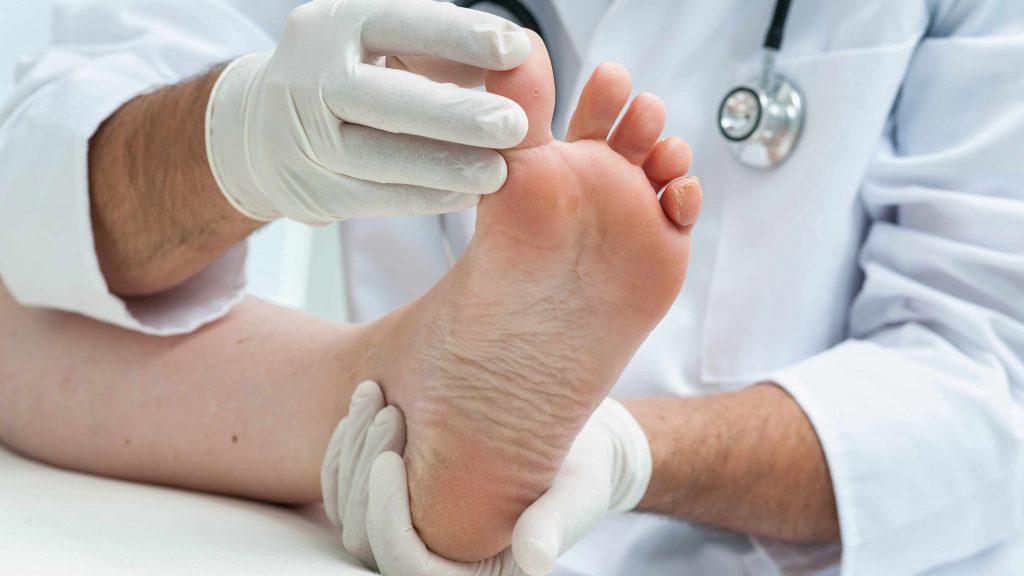-
Featured News
Mayo Clinic Q and A: Treating gout involves combination of lifestyle changes, medication

DEAR MAYO CLINIC: Years ago, I had gout in my toe, but I didn't need medication other than ibuprofen. After it went away, I never had any other issues. But over the past few weeks, it has come back and is painful. Is there anything that I can do to reverse it at this point? What treatments are available?
ANSWER: Gout is a common form of inflammatory arthritis that can flare up quickly, causing intense pain. Successfully treating gout involves a combination of lifestyle changes and medication. Maintaining those changes over time can help keep gout at bay, and you may need to take medication long term, too.
Gout develops as a result of urate crystals building up in a joint. Those needle-like crystals form when you have high levels of uric acid in your blood. Your body produces uric acid as it breaks down purines — substances found naturally in the body, as well as in certain foods and beverages. Normally, uric acid dissolves in your blood and passes through your kidneys into the urine. But in some cases, your body makes too much uric acid, or your kidneys flush out too little uric acid, and it builds up to form urate crystals.
Although gout can affect any joint, it most often occurs at the base of the big toe. Symptoms include significant joint pain, swelling, tenderness and redness. Gout symptoms usually develop quickly, and they can linger from several days to several weeks.
There are steps you can take to ease gout symptoms and lower your risk of future flare-ups. First, assess your diet. To reduce your gout risk, eat fruits, vegetables, whole grains, and fat-free or low-fat milk products. Get your protein mainly from low-fat dairy products, which may have a protective effect against gout. Limit the amount of meat, fish, seafood and poultry that you eat.
Second, drink plenty of fluids: 8 to 16 cups, or about 2 to 4 liters, of fluid daily, with at least half of that water. Limit or avoid alcohol, especially beer, which can increase the risk of gout.
Third, exercise regularly and maintain a healthy weight. If you're overweight, your body makes more uric acid, and your kidneys have a harder time eliminating it. But even though losing weight may decrease uric acid levels, avoid fasting or rapid weight loss. That may temporarily raise uric acid levels and worsen gout symptoms.
Gout treatment also involves medication. An acute gout attack often can be managed with over-the-counter nonsteroidal anti-inflammatory drugs, or NSAIDs, such as ibuprofen. In severe cases, your health care provider may recommend a more powerful prescription NSAID, such as indomethacin or celecoxib.
Colchicine, a type of pain reliever that reduces gout pain, may be appropriate, too. Corticosteroid medications, such as prednisone, also may be used to control gout. Due to the potential for significant side effects, however, corticosteroids typically are recommended only for people who can't take NSAIDs or colchicine.
The overall goal of gout treatment is to reduce the level of uric acid in the blood to less than 6 milligrams per deciliter. In people with long-standing, aggressive disease, the target is less than 5 milligrams per deciliter. To achieve that, your health care provider may recommend a medication called allopurinol and adjust the dose over time until your blood uric acid level is at the goal. If you cannot tolerate allopurinol or if the allopurinol is not effective enough to achieve the blood uric acid goal, the medication febuxostat is an alternative. Once you've reached your goal blood uric acid level, you likely will need to continue taking allopurinol or febuxostat long term to prevent future gout attacks.
The specific type of gout medication that's right for you depends on your medical history and current health status. Your health care provider can work with you to decide what's best for your situation. — Dr. Ronald Butendieck Jr., Rheumatology, Mayo Clinic, Jacksonville, Florida
Related Articles







